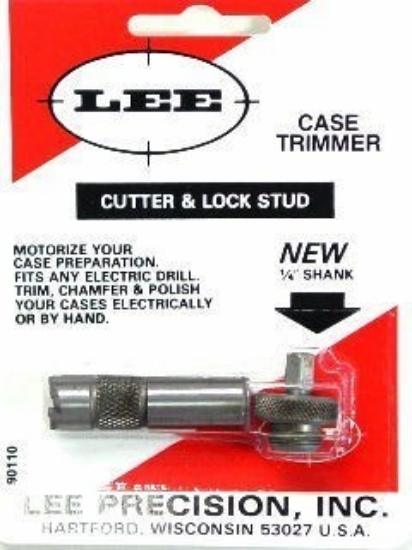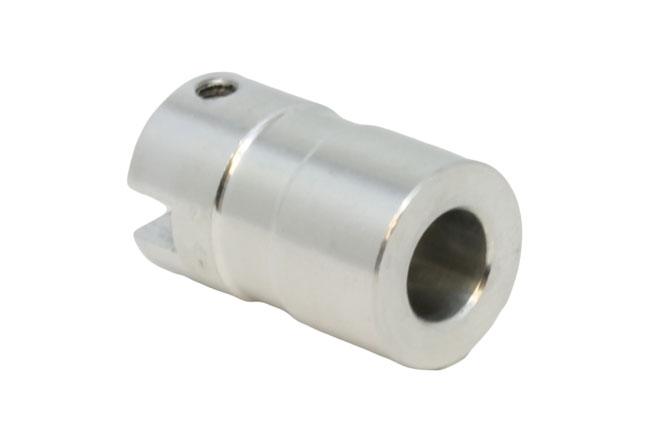I have been reading a lot about bumping the shoulder back when fl sizing. My question is why do I need to purchase more reloading equipment when I have been sizing my brass to fit my case length case gauge an having no problems. Just asking what am I missing.
You are using an out of date browser. It may not display this or other websites correctly.
You should upgrade or use an alternative browser.
You should upgrade or use an alternative browser.
Shoulder Bump
- Thread starter rmarkidom
- Start date
 Help Support Long Range Hunting Forum
Help Support Long Range Hunting Forum
Welcome to LRH, and enjoy! You do not have to; it just makes life easier. Jeff does an excellent job of explaining it.I have been reading a lot about bumping the shoulder back when fl sizing. My question is why do I need to purchase more reloading equipment when I have been sizing my brass to fit my case length case gauge an having no problems. Just asking what am I missing.
You don't have to do anything.
My suggestion, if I am understanding you correctly would be to bump the shoulder back based on your chamber versus a case gauge. Bump the shoulder jusy so that you do not get resistance when closing the bolt. You wouldn't have to buy anything to do this.
Steve
My suggestion, if I am understanding you correctly would be to bump the shoulder back based on your chamber versus a case gauge. Bump the shoulder jusy so that you do not get resistance when closing the bolt. You wouldn't have to buy anything to do this.
Steve
Cemetery21
Well-Known Member
That is my preference, but I realize some folks load a cartridge for more than one rifle. I would just load for the shortest chamber, but I guess case gauges work for that scenario.based on your chamber
Varmint Hunter
Well-Known Member
I have been reading a lot about bumping the shoulder back when fl sizing. My question is why do I need to purchase more reloading equipment when I have been sizing my brass to fit my case length case gauge an having no problems. Just asking what am I missing.
Does your "case length guage" measure overall length or headspace? These would be different measurements. Bumping shoulders back a few thousandths has nothing to do with the case's overall length. It does allow you to minimalize the amount you resize for better case life and (usually) better shot-to-shot consistency.
Overall case length is a measurement to ensure that your case does not exceed the chamber limits for the case's length. Case length should be measured after sizing because cases often measure longer after FL sizing.
An excessively long case could cause the case mouth to be jammed into the bullet as the bolt is closed. This would result in a dramatic increase in pressure.
backwoodsshooter
Well-Known Member
only time i've ever found shoulder bumper be needed is when i loaded for an AR platform.
for my bolt guns, just FL size and roll on.
oh and no special equipment needed really. a case gauge or the hornady tool might make things a little more easier, but you can use your chamber to do the same thing, just a weeee bit more time involved.
for my bolt guns, just FL size and roll on.
oh and no special equipment needed really. a case gauge or the hornady tool might make things a little more easier, but you can use your chamber to do the same thing, just a weeee bit more time involved.
TennJed
Well-Known Member
- Joined
- Nov 18, 2012
- Messages
- 180
If you're on a low budget, knock offs that work just be gentle can be found on amazon or any reputable site like midwayusa will carry the hornady brand. You'll also need a blade type caliper to use them.Where do you buy these gauges at I have a 270wsm that bolt is tight on and is this a special die for resizing Thanks
WildRose
Well-Known Member
Lot's of good suggestions here and above.@ar91599
You do not need a gauge. Watch the video Feenix posted. You need your normal die and a caliper is really all. The rifle will tell you when the case is sized properly and the caliper will tell you if you need to trim based on SAAMI specs.
Steve
Your rifle will tell you when you have the right length from base to shoulder, your bolt should fall freely or at least with little to no resistance.
For overall length the simplest solution is the Lee case gauge trimmers.

Cutter & Lock Stud
Use the Lee Cutter and Lock Stud with the Case Length Gauge & Shell Holder to trim cases. Can be used by hand or with an electric drill. Works on all brass less than .475 base diameter. If you are looking for trimming cases with a base diameter larger than .
They have different bases and mandrels that are round/caliber specific.

I used the original in conjunction with a cordless drill for many years and it worked great. They do have a specific part now to make it even easier.
If you have a SAAMI spec chamber Hornady Case Gauges work great and they will even make you one to spec if you send them a few loaded dummy rounds.
Personally I've found it difficult to actually measure shoulder bump manually with a caliper but if you slowly set the resizing die down until you have a good fit in the chamber again, the rifle will tell you all you need to know.
If you're loading for multiple rifles shooting the same round you either need separate dies set up to get the optimal fit in each or you compromise on a length that works in all of them. Otherwise you end up having to readjust the dies for each separate rifle and that's a great way to induce errors.
Broz and I use similar T-7 presses and you can just change the tool head and have separate tool heads set up with dies for each rifle. That is not an inexpensive solution but it is probably the best if you're not simply going to set up separate presses for each.
Here's another video using the Whidden, Hornady, and Wilson case gauges.

Shoulder Bump Gauge - Whidden Gunworks
The Whidden Gunworks shoulder bump gauge enables you to adjust your sizing die to the desired measurement. The bump gauge is attached to your calipers with a set screw and determines the measurement from the base to the shoulder of the case. We now offer a Thumbscrew Pack that will fit the...
59FLH
Well-Known Member
Maybe you are bumping your shoulder.……: I have been sizing my brass to fit my case length case gauge an having no problems. Just asking what am I missing.
milboltnut
Well-Known Member
I use feeler gauges. Those Redding shell holders are bit much. I have a coax press, so the feeler gauges are a must. I check it on my dillion case gauge and the head sits flush with the high step.
Last edited:
I use these. Each shell holder varies by .002. Put my gun on the bench and start with least amount of shoulder bump, resize 5 pieces, if the fit is to tight in my rifle chamber I move to the next shell holder bumping it additional .002. Once I have good cycling and chamber fit I stop and then size all my brass. I then know I've bumped my shoulder back just enough to fit my rifles chamber and not a gauge. I then check OAL of the brass and trim as needed. Just my process but it's simple and produces excellent results for me.
 www.redding-reloading.com
www.redding-reloading.com
Competition Shellholder Sets - Redding Reloading Equipment: reloading equipment for rifles, handguns, pistols, revolvers and SAECO bullet casting equipment
Reloading equipment for rifles, handguns, pistols, revolvers, custom dies, bullet casting equipment, powder measuring and weighing equipment, bullet seating dies
rsbhunter
Well-Known Member
FL sizing is shoulder bumping as much as having the die adjusted is neck sizing. If a case is sized, but won't let the bolt close, we turn the die in a little. Once the shell does fit the chamber, we have "resized" all dimension s to fit the chamber. The only reason that we have or use bump gauges is to set the shoulder push back to specific length accurately, and to see if the amount is repeated every time, which can indicate that annealing is needed.....at least, that's why I use them...rsbhunter